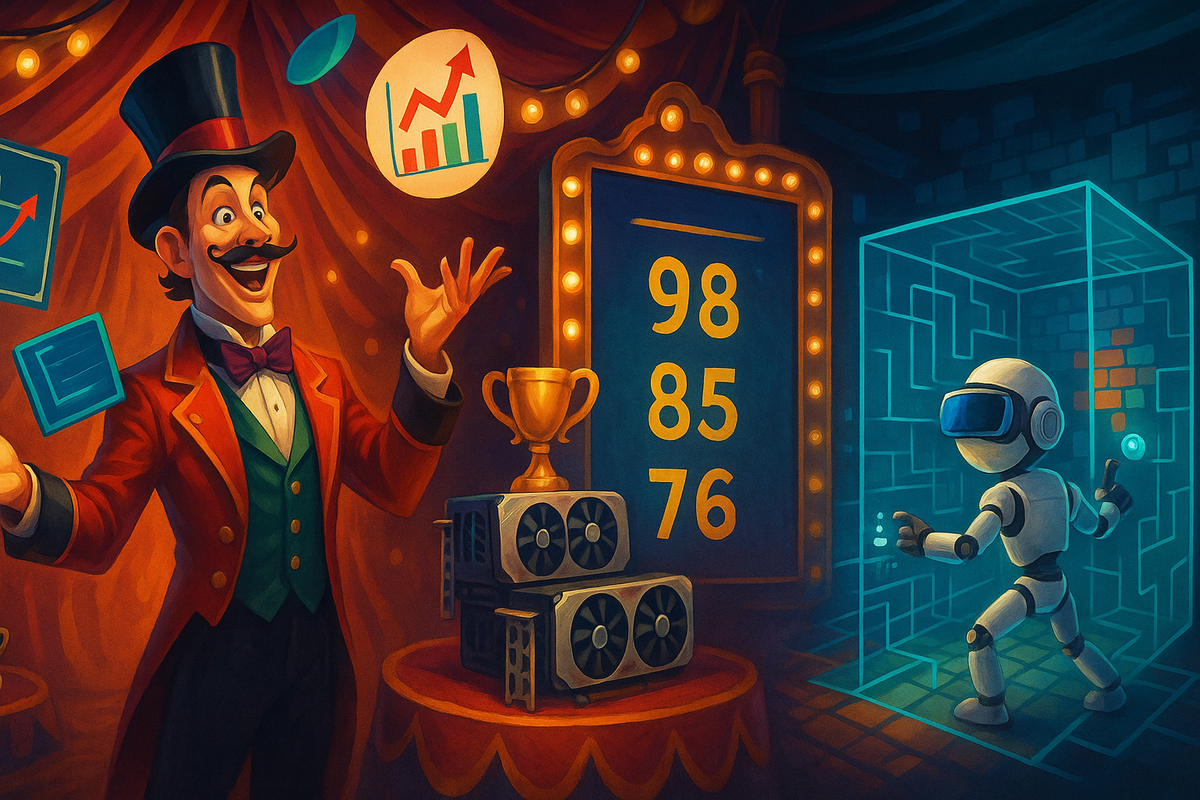Benchmark Bonanza: Because Nothing Says ‘We Understand Intelligence’ Like Fancy Scoreboards
... Of course, the real magic happens off-camera: opaque private testing, cherry-picked best runs, and fine-tuning on the very tasks you’re supposed to be “unprepared for.” ...

Oh, what unbridled ecstasy it is to watch AI luminaries proclaim victory every time they slap a new benchmark on the wall. First they regale us with the “two orders of magnitude per decade” decline in compute cost, as if announcing that milk is now 20% off forever qualifies anyone for a Nobel Prize in Philosophy. Francois beams as though cheaper GPUs alone will transmogrify our glorified pattern-matchers into fluid-reasoning maestros. Because obviously, nothing says “we understand intelligence” like the ability to buy more RAM.
Enter the Abstraction and Reasoning Corpus, or ARC, the gilded chalice of AI virtue signalling. Back in 2019, our protagonist unveiled ARC1 and watched in amazement as every trillion-parameter behemoth still scored about zero, proving that exabytes of pretraining data are no substitute for a dash of common sense. Naturally, the plot twist arrives: “Tesla adaptation,” a sorcery that lets models “reprogram themselves” at inference. Lo and behold, a single fine-tune on the public ARC-1 training set vaults performance to “human level” … if by “human level” you mean the ability to memorize the exam syllabus before the test.
But never fear, ARC2 has appeared to temper our hubris. These fresh puzzles demand genuine multi-step compositional reasoning, so much so that static giants like GPT-4.5 flail at a grand 1–2% accuracy, barely above the noise floor. To bolster statistical rigor, we even hired a ragtag human volunteer force (uber drivers, undergrads, and those poor souls who click “Next” for twenty bucks) to prove that 10 random people could collectively ace every ARC2 puzzle. It’s the gold standard of significance testing: paying strangers in cash to save face.
Just when you thought the benchmark circus had peaked, ARC3 looms on the horizon, promising interactive mini-games where models must explore, experiment, and perhaps ask for directions back to the main menu. Yes, AI will soon be thrust into a fresh digital dungeon with no map or cheat codes, because nothing screams “AGI is here!” like a lab-only demo that still can’t navigate its own UI.
And how could we neglect the pièce de résistance? Witness OpenAI’s vaunted O3 system, which “solved” ARC1 by running a thousand candidate chains of thought per puzzle, at a cool $200 and 13 minutes each. Efficiency! While a human child breezes through in thirty seconds for the price of a candy bar, our darling algorithm burns through GPUs like a teenager through Red Bull, then pats itself on the back for hitting the leaderboard.
Of course, the real magic happens off-camera: opaque private testing, cherry-picked best runs, and fine-tuning on the very tasks you’re supposed to be “unprepared for.” This isn’t research; it’s benchmark performance art. As the “Leaderboard Illusion” paper so charitably revealed, some labs treat benchmarks like open bar promotions, sampling endlessly behind closed doors until they concoct a cocktail worth bragging about.
So here’s to us, the connoisseurs of sparkly KPIs, the devotees of decimal-place shaving, the believers that a higher score equals deeper understanding. Pour another espresso, polish your slide deck, and revel in the next minor metric uptick. Because when the day comes that an AI actually earns its keep by solving problems we haven’t already scripted for it, we’ll all need a stiff drink to celebrate surviving the Benchmark Bonanza.